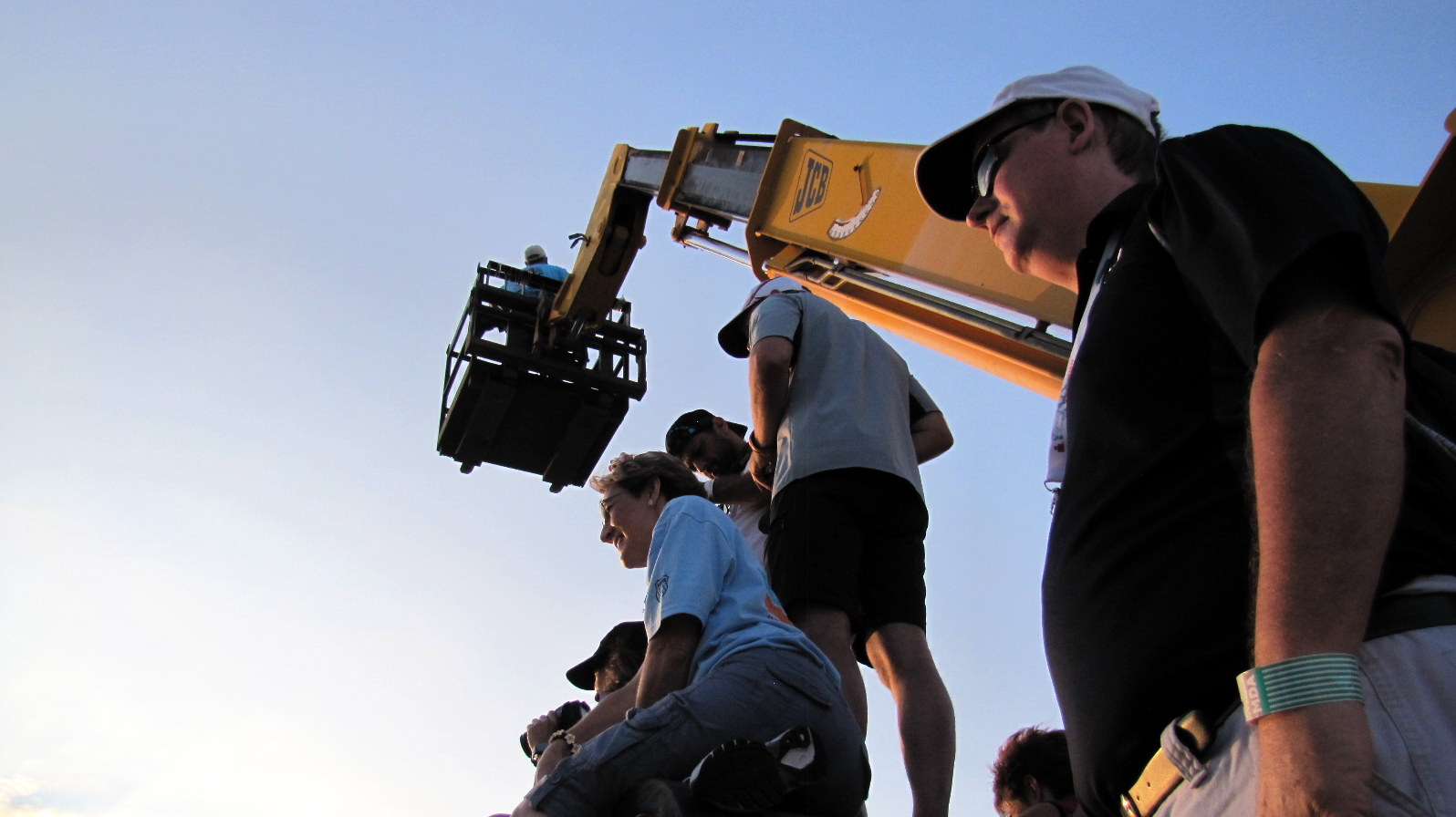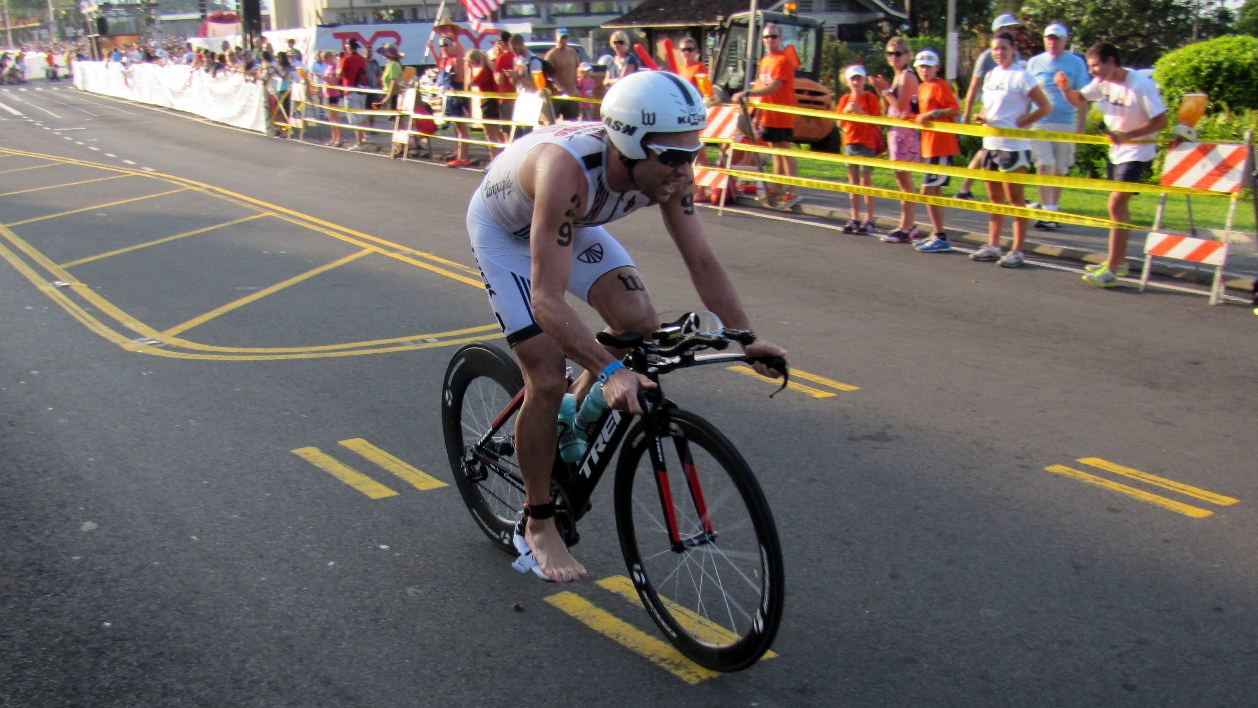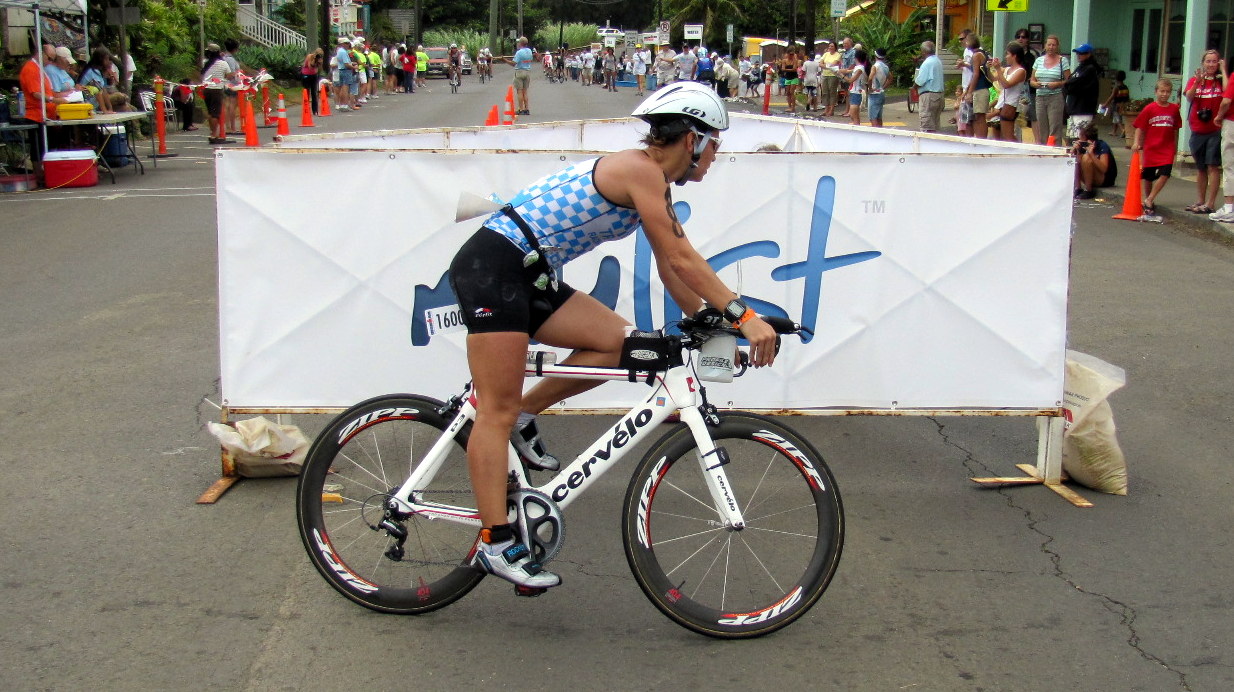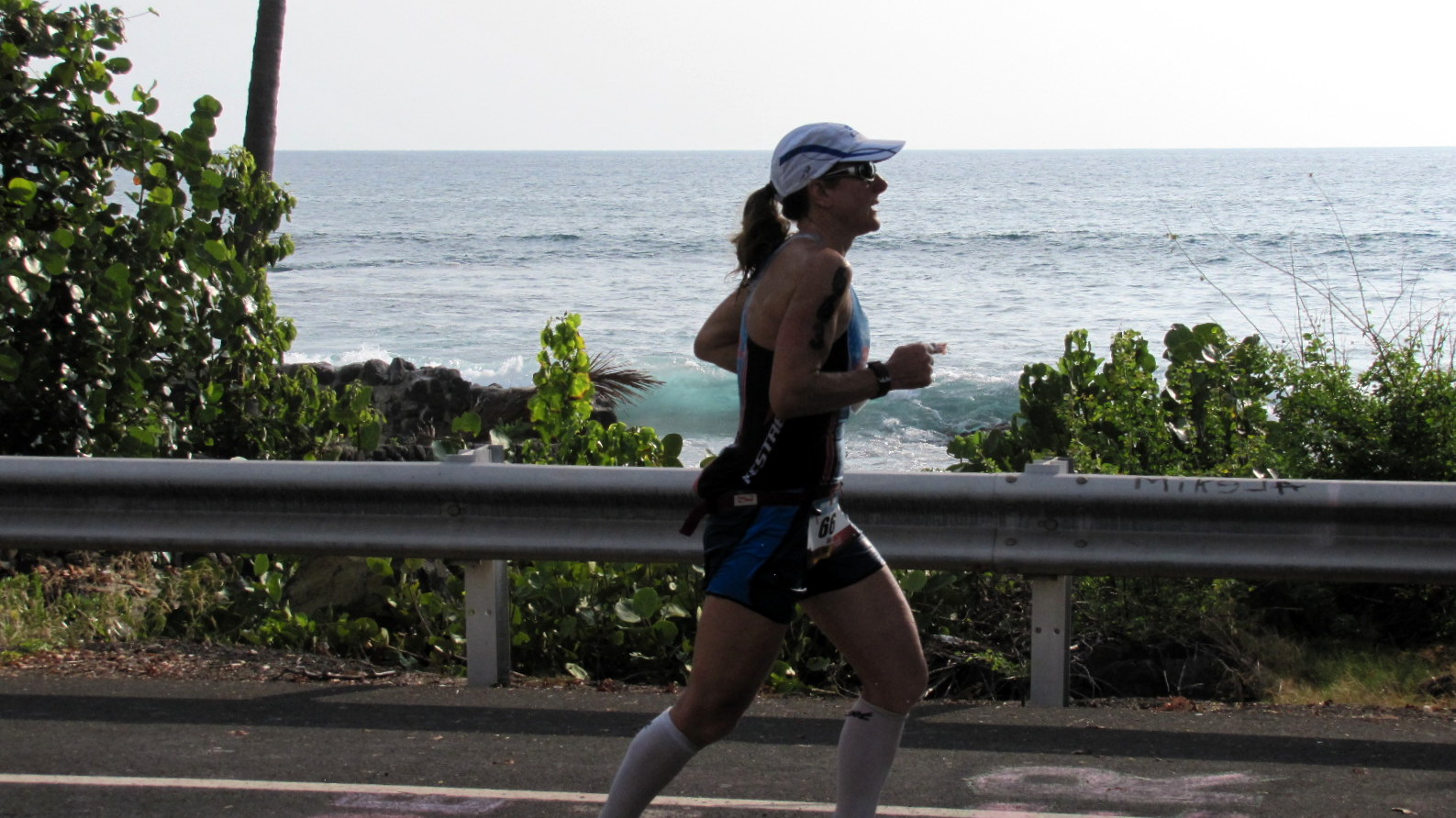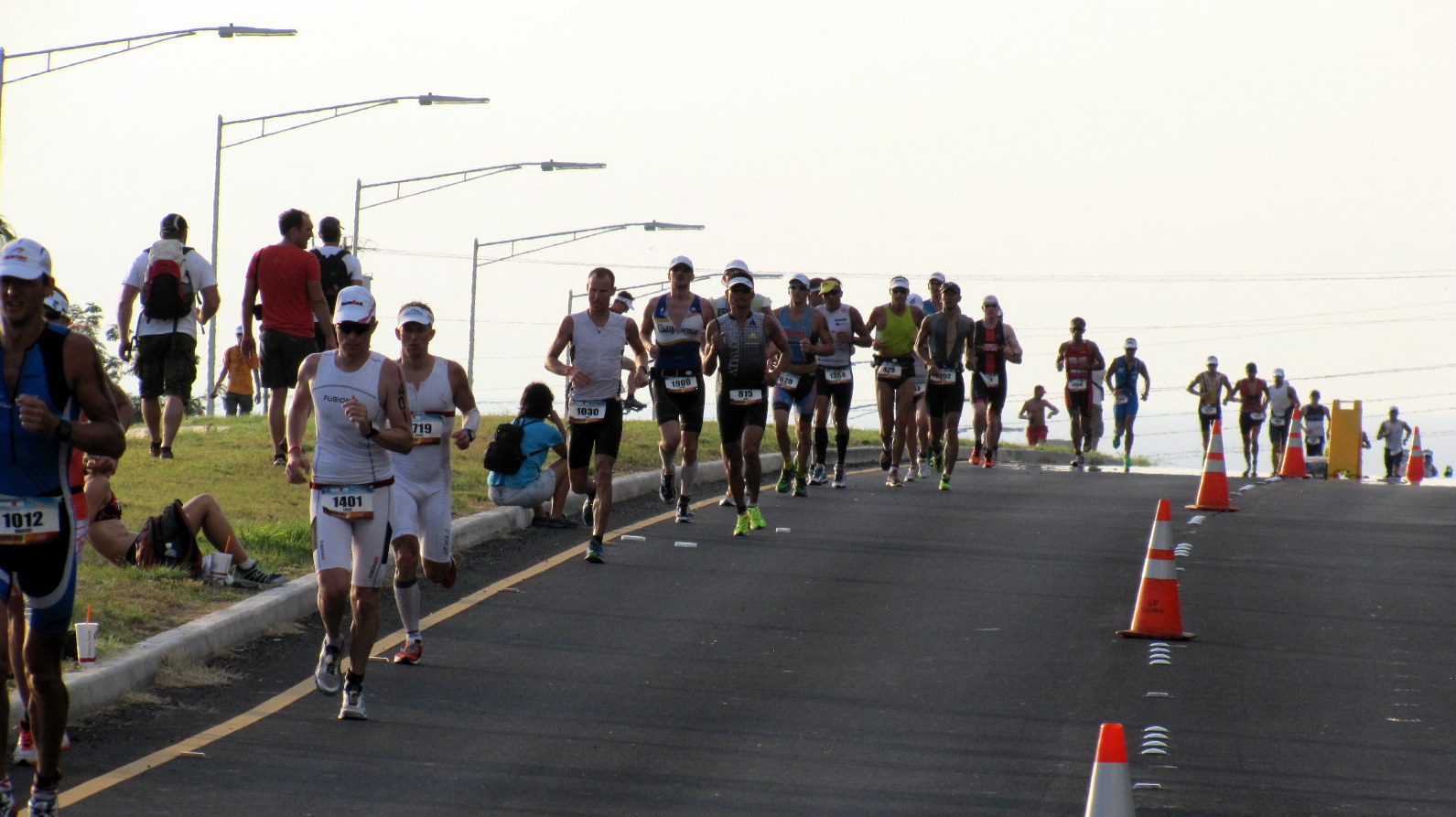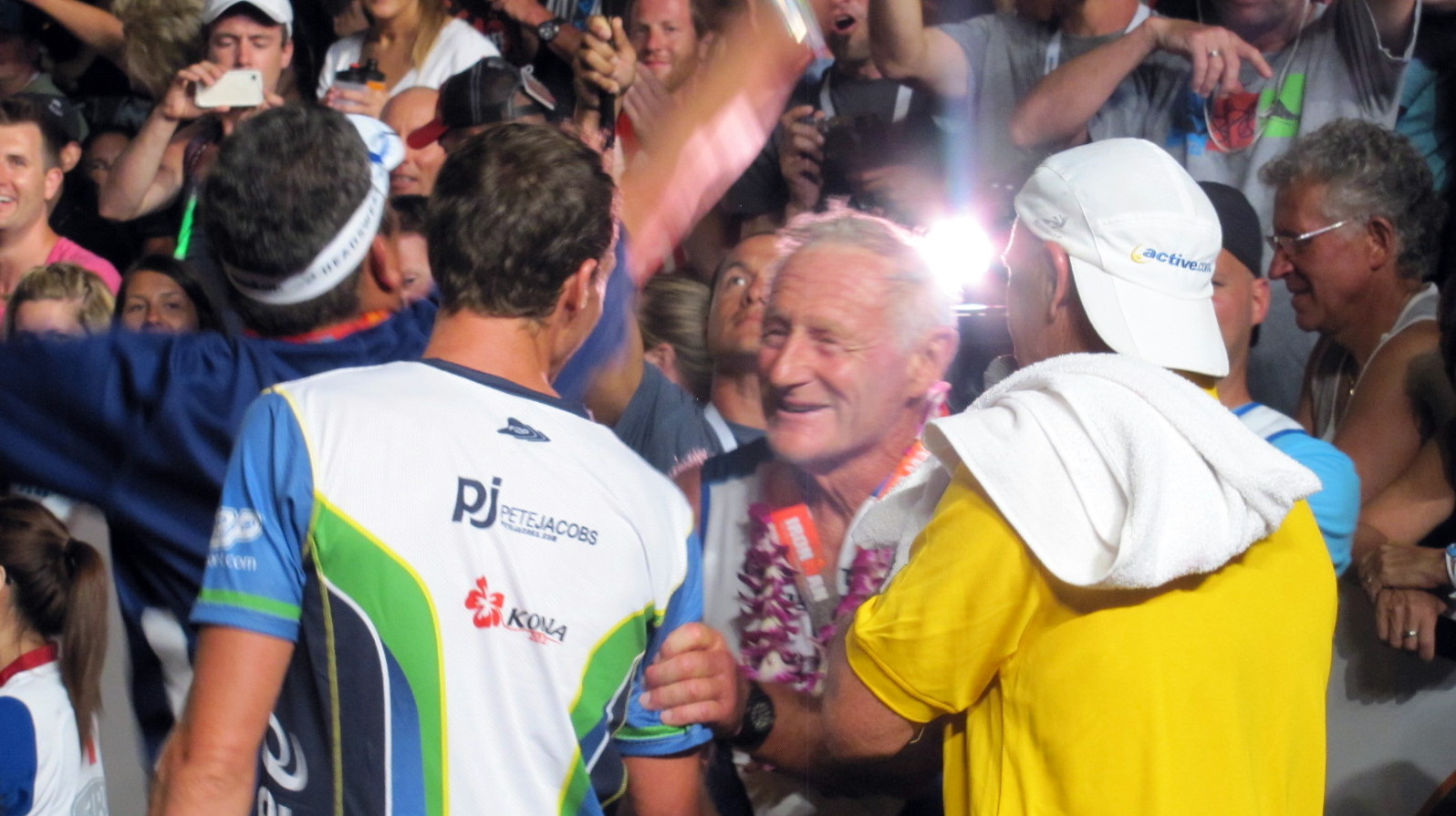Kona 2012 in Words and Pictures
Photos and story by Lee Gruenfeld
It was hard.
It’s supposed to be hard.
I like it when it’s hard.
It’s just not supposed to be that hard…
Elite prizefighters are surrounded by entourages, people who hover close by day and night and are devoted to their meal ticket’s every comfort and convenience. The fighter gets so used to it that it’s often a shock when, at the time he needs that support most of all, it suddenly evaporates and he finds himself on a tiny patch of canvas-covered earth, alone except for one other man who’s sole purpose is to beat him to a pulp.
It’s much the same with the Ironman triathlete. After months of constant encouragement from family, friends, coaches, club members and workout partners, there comes a point when he is suddenly, frighteningly, alone. In Kona it happens somewhere out on the Queen K when the laws of natural selection have spread the pack out, the sun is relentlessly screaming down on his back, the silence becomes a palpable, malevolent presence, and the wind is a purpose-driven beast trying to beat him to a pulp.
For the age grouper who can’t break twelve hours, it gets worse. On the bike there were occasional moments of relief when he could coast and, as harsh as the sun was, at least there was light. Now, on the run, there is no coasting. When his feet stop moving, he stops moving. And at just the moment when he is most vulnerable, when he starts hallucinating and hears the demons whispering, when he fears that his exhaustion might not be temporary, that’s when the sun disappears, blackness descends, and the loneliness and disconnection are complete.
It’s not supposed to be that hard? It’s always that hard. Last Saturday it was even harder, as ocean currents, wind, heat and pounding rain in Hawi conspired to maximize energy drain on the swim and bike and make the marathon more of a Bataan death march than an athletic event. Rumors abounded that the swim course was longer than 2.4 miles and that 0.2 miles had been added to the bike course. Not true, but I know the feeling: On some days I’m convinced my golf course grew more yardage, trees and sand traps overnight.
One way to gauge the difficulty of an Ironman is by the number of age group records broken. There are over thirty competitive divisions, and half a dozen new records is fairly typical. This time there were two. And yet over 95% of the athletes who toed the start line made it to the finish. "Ironman" is not a title conferred casually.
There were some wonderful moments. Hiromu Inada of Japan, who came within two minutes of breaking fifteen hours in South Korea last year as a 79-year-old, set a new 80+ record here in 15:38. Harriett Anderson, the oldest finisher and sole occupant of the 75-79 division, beat the 17-hour cutoff by twenty seconds. If you admire a pro who finishes in 8:30, just try to imagine what it must have been like to be out on that course nonstop for twice that long. Five athletes achieved "The Double" for 2012, capturing titles in both the Ironman and Ironman 70.3 world championships: Pro Leanda Cave and age groupers Laura Sophiea (55-59), Danielle Kehoe (25-29), Milos Kostic (70-74), 80+ record-breaker Inada, and me own bride Cherie Gruenfeld (65-69).
It was a great day. Here are some pictures to help you remember it.


























